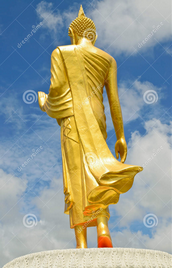Bhikkhu Bodhi (Buddhist Publication Society Newsletter, No. 4, 1986, BPS.lk) edited by Dhr. Seven, Crystal Quintero, Ashley Wells, Wisdom Quarterly


 |
| "Mind" is not the brain. The seat of consciousness is more likely the heart (hadaya-vatthu). |
.
An ancient maxim found in the Dhammapada sums up the practice of the Buddha’s teaching in three simple guidelines to training: - to abstain from all harm (bad),
- to cultivate all skill (good),
- to purify one’s mind (heart).
 |
| The Buddha points the way to freedom. |
- "Heart as Physical Base" of Mental Life: The heart, according to the Commentaries as well as to general Buddhist tradition, forms the physical base (vatthu) of consciousness. In the canonical texts, however, even in the Abhidharma ("Ultimate Doctrine"), no such base is ever exactly specified, a fact which seems to have first been discovered by Shwe Zan Aung (Compendium of Philosophy, pp. 277ff.) In the Patth. there is the repeated passage: "That material thing based on which mind-element and mind-consciousness element function." (Pali: Yam rūpam nissāya manodhātu ca mano-viññāna-dhātu ca vattanti, tam rūpam). [The Burmese meditation master assured us that, with mastery of the lower absorptions (rupa jhanas), one can enter meditation, emerge from it, then direct attention to the area of the heart to find the "mind door," a greenish mirror of sorts that reflects consciousness. It is in the area of the heart not the head.

Defilements
 |
| Bonds, taints, outflows, biases, cankers, fetters... |
which are unskillful mental forces that run beneath the surface of our stream of consciousness that inspires our thinking, values, attitudes, and actions (karma).
Chief among the defilements are three poisons the Buddha termed the “roots of all evil”:
- greed (craving, clinging)
- hatred (fear, aversion)
- delusion (confusion, ignorance)
From these "roots" emerge their numerous offshoots and variants: anger and cruelty, avarice and envy, conceit and arrogance, hypocrisy and vanity, the multitude of wrong views (ditthi).
Contemporary attitudes do not look favorably upon such notions as defilement and purity, and on first encounter they may strike us as throwbacks to an outdated moralism, valid perhaps in an era when prudery and taboo were dominant, but having no claims upon us smart, emancipated torchbearers of modernity.
We, admittedly, do not all wallow in the mire of gross materialism. Many among us seek our enlightenment or spiritual high, but we want it on our own terms.
As heirs of this new sense of freedom, we believe they it is to be won through an unbridled QUEST for experience without any special need for introspection, personal change, or self-control.
 |
| The Buddha walked then taught the path. |
The purpose of all insight and enlightened understanding is to liberate the mind (metaphorically and in some very literal ways the heart) from the defilements, and nirvana itself, the goal of the teaching, is defined quite clearly as freedom from
- greed
- hatred
- delusion.
From the perspective of the Dharma, defilement and purity are not postulates of a rigid authoritarian moralism but real and solid facts essential to a correct understanding of the human situation in the world.
As facts of lived experience (directly observable and confirmed for oneself in meditation), defilement and purity pose a vital distinction having a crucial significance for those who seek liberation from all suffering once and for all time.
They represent the two points between which the path to liberation unfolds -- the former its problematic starting point, the latter its final resolution and endpoint. The defilements, the Buddha declares, lie at the bottom of all human suffering (pain, disappointment).
Burning within as lust and craving, as rage and resentment, as ignorance and confusion, they lay to waste hearts, lives, hopes, and entire civilizations, and they drive us blind and thirsty through the incessant round of birth and death.
Meditation
Bhavana = cultivation, development, causing to appear, bringing into being the antidotes to greed, hatred, and delusion, which are
The principal tools of Buddhist meditation are the core wholesome mental factors of
But in the systematic practice of meditation [particularly as described in the sutra on the setting up of the Four Foundations of Mindfulness (MN 10)], these are strengthened and yoked together in a program of self-purification.
This effort aims at extirpating the defilements root and branch so that not even the subtlest unwholesome stirrings remain.
They represent the two points between which the path to liberation unfolds -- the former its problematic starting point, the latter its final resolution and endpoint. The defilements, the Buddha declares, lie at the bottom of all human suffering (pain, disappointment).
Burning within as lust and craving, as rage and resentment, as ignorance and confusion, they lay to waste hearts, lives, hopes, and entire civilizations, and they drive us blind and thirsty through the incessant round of birth and death.
- ANALOGY: The three principal defilements can be compared to FIRE: desire "burns," rage "smolders," and smoke "blinds" us -- the way greed, hatred, and delusion motivate unwholesome actions (karma), whereas nirvana quenches like cool WATER that alleviates burning, douses smoldering, and stops smoke at its root source.
Meditation
 |
| Sit, focus, hold attention on one point even when it wants to move. When the mind (heart) settles, it coheres, and wisdom gains a foundation to arise. Jhana + vipassana = prajna. |
.
The work of purification must be undertaken where the defilements arise, in the mind itself, and the main method the Dharma describes for purifying the mind is meditation.Bhavana = cultivation, development, causing to appear, bringing into being the antidotes to greed, hatred, and delusion, which are
- nonclinging (renunciation, letting go)
- nonaversion (acceptance, compassion)
- nondelusion (learning, reflection, wisdom).
The principal tools of Buddhist meditation are the core wholesome mental factors of
- energy (effort)
- mindfulness (nonjudgmental attention)
- concentration (mental collectedness, one-pointedness)
- understanding (right view, wisdom).
 |
| Purified to the luster of gold (VinayakH) |
This effort aims at extirpating the defilements root and branch so that not even the subtlest unwholesome stirrings remain.
Since ALL defiled states of consciousness are ultimately born from ignorance (avijja, moha), the most deeply embedded defilement, the final and ultimate purification of mind is to be accomplished through the instrumentality of wisdom, the knowledge-and-vision of things as they really are.
Wisdom, however, does not arise through chance or random good intentions, but only in a purified mind.
So in order for wisdom to come forth and accomplish the ultimate purification -- the uprooting and eradication of defilements -- we first have to create a space for it by developing a provisional purification of mind -- a purification which, though temporary and vulnerable, is nevertheless indispensable as a foundation for the arising of liberating insight.
Wisdom, however, does not arise through chance or random good intentions, but only in a purified mind.
So in order for wisdom to come forth and accomplish the ultimate purification -- the uprooting and eradication of defilements -- we first have to create a space for it by developing a provisional purification of mind -- a purification which, though temporary and vulnerable, is nevertheless indispensable as a foundation for the arising of liberating insight.
- [NOTE: The absorptions (jhanas) temporarily purify the mind making it malleable for mindful-practice (vipassana), which results in insight.]
The achievement of this preparatory purification of mind begins with the challenge of self-understanding. To eliminate defilements we must first learn to know them, to detect them at work infiltrating and dominating our everyday thoughts and lives.
For countless aeons we have acted on the spur of greed, hatred, and delusion, and thus the work of self-purification cannot be executed hastily, in obedience to our greedy demand for quick results.
The task requires patience, care, and persistence -- and the Buddha’s crystal clear instructions. For every defilement the Buddha in his compassion has given us the antidote, the method to emerge from it and vanquish it.
By learning these principles and applying them properly, we can gradually wear away the most stubborn inner stains and reach the end of suffering, the “taintless liberation of the mind,” known as nirvana.
For countless aeons we have acted on the spur of greed, hatred, and delusion, and thus the work of self-purification cannot be executed hastily, in obedience to our greedy demand for quick results.
The task requires patience, care, and persistence -- and the Buddha’s crystal clear instructions. For every defilement the Buddha in his compassion has given us the antidote, the method to emerge from it and vanquish it.
By learning these principles and applying them properly, we can gradually wear away the most stubborn inner stains and reach the end of suffering, the “taintless liberation of the mind,” known as nirvana.

































































































































































































































No comments:
Post a Comment